Red Light Therapy and Sauna: A Beginner’s Guide
Learn how Red Light Therapy can help you improve your skin health, reduce signs of aging, and boost energy levels. Learn more now!
What is red light therapy?
Red light therapy and sauna are complementary therapies offering various health benefits.
Red and near-infrared light of specific wavelengths stimulates natural healing and repair processes in red light therapy. It is effective for a variety of conditions, including:
- Skin conditions, such as acne, eczema, and psoriasis
- Wound healing
- Pain relief
- Inflammation reduction
- Muscle recovery
- Testosterone production
Saunas use heat to raise the body’s temperature. This can have some health benefits, including:
- Detoxification
- Relaxation
- Improved circulation
- Pain relief
- Reduced muscle tension
- Improved cardiovascular health
Combining red light therapy and sauna
Some people choose to combine red light therapy and sauna to get the benefits of both treatments. There is evidence that this can be an effective approach, but more research is needed.
One study found that combining red light therapy and sauna was more effective for reducing pain and inflammation in people with osteoarthritis than either treatment alone. Another study found that combining red light therapy and sauna improved cardiovascular health in people with high blood pressure and cholesterol.
If you consider combining red light therapy and sauna therapy, you must talk to your doctor first. They can help you determine if this is a safe and effective approach.
How to combine red light therapy and sauna
If you do decide to combine red light therapy and sauna, there are a few things you can do to maximize the benefits:
- Use a red light therapy device that emits the correct wavelengths of light. The most effective wavelengths for red light therapy are 630-670 nanometers for red light and 810-830 nanometers for near-infrared light.
- Use the red light therapy device for the recommended amount of time. This will vary depending on the device and the condition you are treating.
- Use the sauna at a temperature that is comfortable for you. Most saunas are set to between 150 and 180 degrees Fahrenheit.
- Start with short sessions and gradually increase the duration as you tolerate it. Most people can tolerate sauna sessions of 15-20 minutes at a time.
Staying hydrated before, during, and after using the sauna is important. You may also want to drink a sports drink to replenish electrolytes.
Safety considerations
Red light therapy and sauna are generally safe for most people. However, there are a few things to keep in mind:
- Pregnant women or people with light-sensitive skin conditions should not use red light therapy.
- Sauna should not be used by people with heart disease, high blood pressure, or other cardiovascular conditions.
- If you have any other health concerns, it is recommended that you consult with your doctor before using red light therapy or sauna.
Red light therapy (RLT) is a type of phototherapy that may help:
- Treat skin issues like stretch marks and wrinkles
- Treat skin conditions such as psoriasis, scars, and acne
- Reduce inflammation or edema
- Repair muscle tissues
- Promote healthy aging
RLT is commonly referred to as photobiomodulation. Endre Mester accidentally discovered it in 1967 at the Semmelweis Medical University in Budapest, Hungary. He noticed that laser light helped promote hair growth and wound healing in rats.
Scientific literature suggests there are nearly 60 other names for RLT, such as:
- Low-level light therapy (LT)
- Soft laser therapy
- Cold laser therapy
- Biostimulation
- Photonic stimulation
- Low-power laser therapy (LPLT)
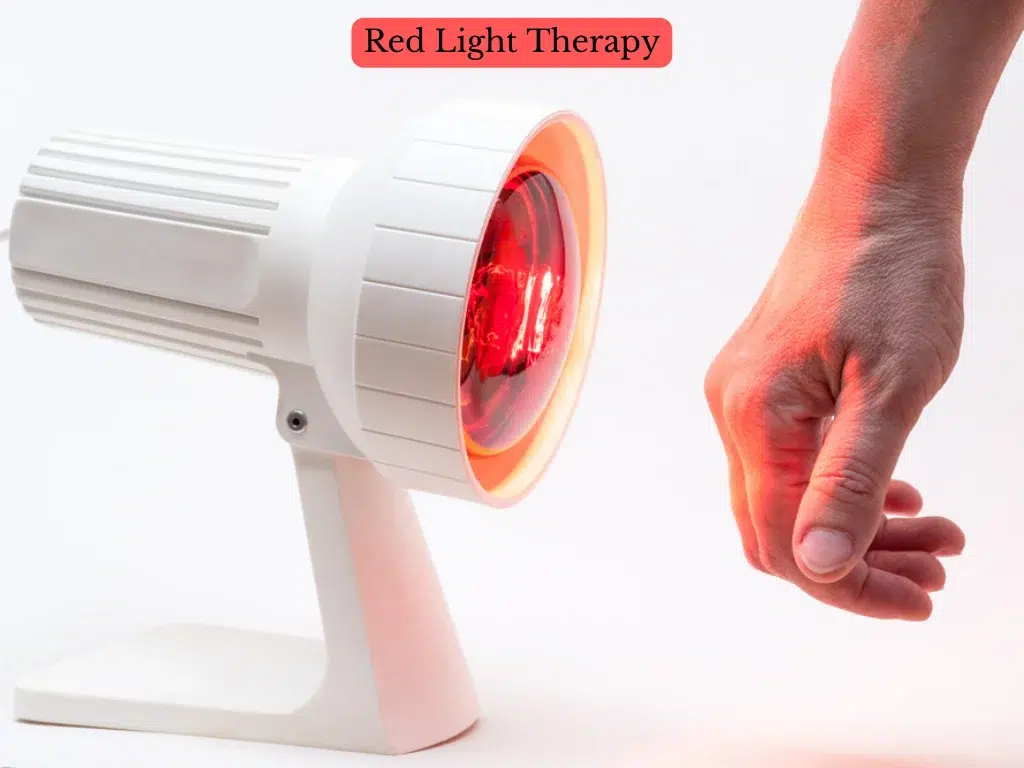
How does red light therapy work?
RLT works by repetitively exposing your skin to low levels of red and near-infrared light for a certain period. At low wavelengths, red light doesn’t generate heat and penetrates the skin between 1 and 2 millimeters, according to 2013 research.
This red light exposure may produce a positive biochemical effect in your cells that strengthens the mitochondria, where the cell’s energy is created. RLT may do this by increasing the transportation of electrons, oxygen consumption, and your levels of ATP (adenosine triphosphate). By increasing the mitochondria’s energy, cells may function more efficiently and rejuvenate and repair themselves.
LEDs are gaining popularity over lasers as the chosen RLT light source because they’re nonablative and nonthermal.
Plus, according to the 2013 research, they may help:
- Increase blood flow
- Reduce inflammation
- Increase levels of collagen
- Increase the production of fibroblast
Learn whether using the sauna before or after a workout to maximize muscle recovery.
What are the benefits of red light therapy?
According to a 2018 review of research, many studies suggest promising results for using RLT, but it’s still controversial. Additional clinical research is needed to confirm its effectiveness. That said, reflections from the past 20 years suggest that RLT may help:
1. Improve skin appearance
One of the most popular uses of RLT is to improve skin appearance. RLT may work in skin health to:
- Using RLT can yield significant improvements in skin health through multiple mechanisms.
- Firstly, it stimulates collagen production, enhancing skin structure, strength, and elasticity.
- Moreover, RLT promotes fibroblast generation, which plays a vital role in collagen synthesis necessary for healthy skin formation.
- RLT facilitates increased blood circulation within the tissue while concurrently reducing cellular inflammation.
These effects may lead to reduced signs of aging, such as wrinkles, fine lines, age spots, sagging skin, and uneven skin tone. RLT may also help with acne, rosacea, eczema, psoriasis, scars, stretch marks, and sun damage.
A 2014 study found that RLT improved skin complexion and texture in 30 participants after 30 treatment sessions over 15 weeks. A 2013 study found that RLT reduced wrinkles and improved skin elasticity in 20 participants after four weeks of treatment.
2. Promote wound healing
Another potential benefit of RLT is promoting wound healing. RLT may help with wound healing by:
- Boosting the flow of blood and delivering oxygen to the site of injury.
- Encouraging the development of new blood vessels (angiogenesis).
- Enhancing fibroblast proliferation and collagen synthesis.
- Reducing inflammation and oxidative stress.
These effects accelerate the healing process and improve the quality of scar tissue. RLT may also prevent or treat infections by killing bacteria and enhancing immune system function.
A 2017 study found that RLT improved wound healing in diabetic rats by increasing angiogenesis and reducing inflammation. A 2016 study found that RLT enhanced wound healing in human skin by increasing fibroblast migration and collagen deposition.
3. Reduce pain and inflammation
RLT may also help reduce pain and inflammation in various conditions, such as arthritis, tendinitis, muscle soreness, neuropathy, fibromyalgia, and post-surgical pain. RLT may reduce pain and inflammation by:
- Modulating inflammatory cytokines and chemokines.
- Inhibiting nerve conduction and transmission.
- Activating endogenous opioid receptors.
- Enhancing tissue repair and regeneration.
These effects may decrease swelling, stiffness, and sensitivity and increase the range of motion and function. RLT may also improve the quality of life and well-being of people suffering from chronic pain and inflammation.
A 2016 meta-analysis found that RLT lowered pain and enhanced function in patients with knee osteoarthritis. A 2015 study found that RLT reduced pain and improved quality of life in patients with chronic low back pain.
4. Improve hair growth
RLT may also help improve hair growth in people with androgenetic alopecia, the most common cause of hair loss. RLT may stimulate hair growth by:
- Raising blood flow and oxygen delivery to the scalp.
- Enhancing the activity of hair follicles and stem cells.
- Growing the anagen (growth) phase of the hair cycle.
- Reducing inflammation and oxidative stress.
These effects may lead to increased hair density, thickness, and coverage and decreased hair shedding and thinning. RLT may also improve the appearance and texture of the hair.
A 2014 study found that RLT increased hair density by 37% in 41 male and female participants after 16 weeks of treatment. A 2013 study found that RLT improved hair growth and quality in 28 male participants after 24 weeks of treatment.
5. Enhance athletic performance
RLT can also enhance athletic performance by improving muscle strength, endurance, recovery, and injury prevention. RLT may enhance athletic performance by:
- Increasing mitochondrial function and ATP production.
- Reducing muscle fatigue and damage.
- Increasing muscle protein synthesis and hypertrophy.
- Improving blood flow and oxygen delivery to the muscles.
- Reducing inflammation and oxidative stress.
These effects may lead to increased power output, speed, agility, and stamina, as well as decreased soreness, inflammation, and risk of injury. RLT may also improve the mental state and motivation of athletes.
A 2018 study found that RLT improved muscle strength and endurance in 39 healthy men after eight weeks of training. A 2016 study found that RLT enhanced muscle recovery and reduced inflammation in 40 soccer players after a simulated game.
Get tips on sauna lighting options like incandescent, LED, and more.
6. Support brain health
RLT may also help support brain health by improving cognitive function, mood, memory, and sleep. RLT may support brain health by:
- Increasing blood flow and oxygen delivery to the brain.
- Enhancing neurogenesis and synaptogenesis.
- Modulating neurotransmitter levels and activity.
- Protecting against neurodegeneration and neuroinflammation.
These effects may lead to increased mental clarity, focus, creativity, and learning ability and decreased stress, anxiety, depression, and insomnia. RLT may also control or treat neurological conditions such as Alzheimer’s disease, stroke, Parkinson’s disease, and traumatic brain injury.
A 2017 study found that RLT improved cognitive function and mood in 11 elderly participants with mild cognitive impairment after 12 weeks of treatment. A 2013 study found that RLT improved sleep quality and duration in 19 healthy volunteers after four weeks of treatment.
7. Boost immune system function
RLT may also help boost immune system function by enhancing the activity and communication of immune cells. RLT may boost immune system function by:
- Increasing the production and proliferation of lymphocytes.
- Enhancing the phagocytic activity of macrophages.
- Stimulating the release of cytokines and chemokines.
- Modulating the ratio between Th1 and Th2 cells.
These effects may lead to increased resistance to infections, allergies, autoimmune diseases, and cancer. RLT may also reduce the severity and duration of symptoms caused by immune system dysfunction.
A 2012 study found that RLT increased lymphocyte count and phagocytic activity in 20 healthy volunteers after four weeks of treatment. A 2009 study found that RLT modulated cytokine levels in patients with rheumatoid arthritis.
Want to Learn More?
I hope this article has provided a helpful overview of some of the main benefits of red light therapy. If you want to dive deeper into the research behind the red light treatment, check out these additional resources:
Find out how infrared saunas can aid cancer patients in boosting health during treatment.
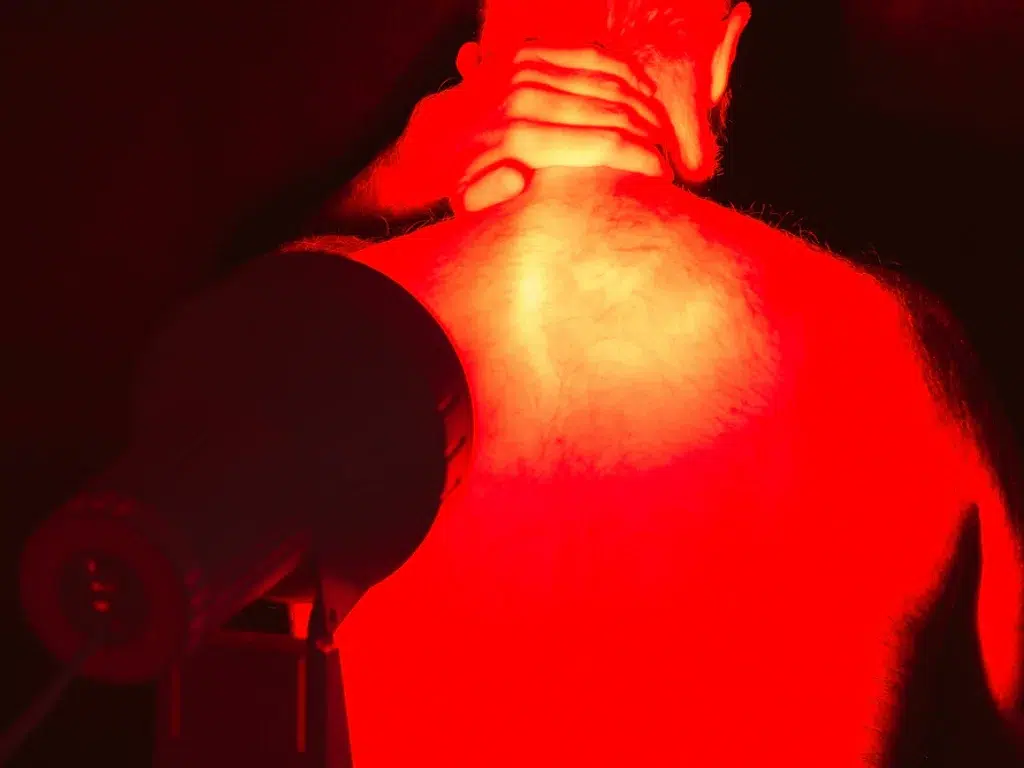
How to use red light therapy devices?
Different types of red light therapy devices, such as handhelds, wearables, panels, beds, face masks, and caps, are available on the market. Each machine has its specifications, such as wavelength, power density, irradiance, exposure time, frequency, and coverage area.
Generally speaking, you should use red light therapy devices as follows:
- Look for machines that use LEDs with wavelengths between 610-625 nm (red) and 660-690 nm (deep red), as these are the most effective for skin and health benefits.
- Cleanse your skin before using the device. Remove any makeup, sunscreen, or moisturizer that may block the light. You may also shave or trim any hair that may interfere with the light penetration.
- Place the device close to your skin, but not touching it. The optimal distance depends on the device’s power and coverage area, usually between 2 and 12 inches. You may also use a stand or a mount to hold the device in place.
- Turn on the device and expose your skin to the light for the recommended duration, usually between 5 and 20 minutes. You may also use a timer or an app to track your session. Do not look directly at the light, as it may damage your eyes. You may wear protective goggles or sunglasses if needed.
- Repeat the process daily or as the manufacturer or your healthcare provider instructs. The optimal frequency depends on your goals and condition, but it is usually between 3 and 7 times weekly. You may also adjust the frequency based on your response and results.
- Monitor your progress and results. You may take photos, measurements, or tests before and after using the device to track skin changes and health changes. You may also keep a journal or a log to record your sessions, feelings, and feedback.
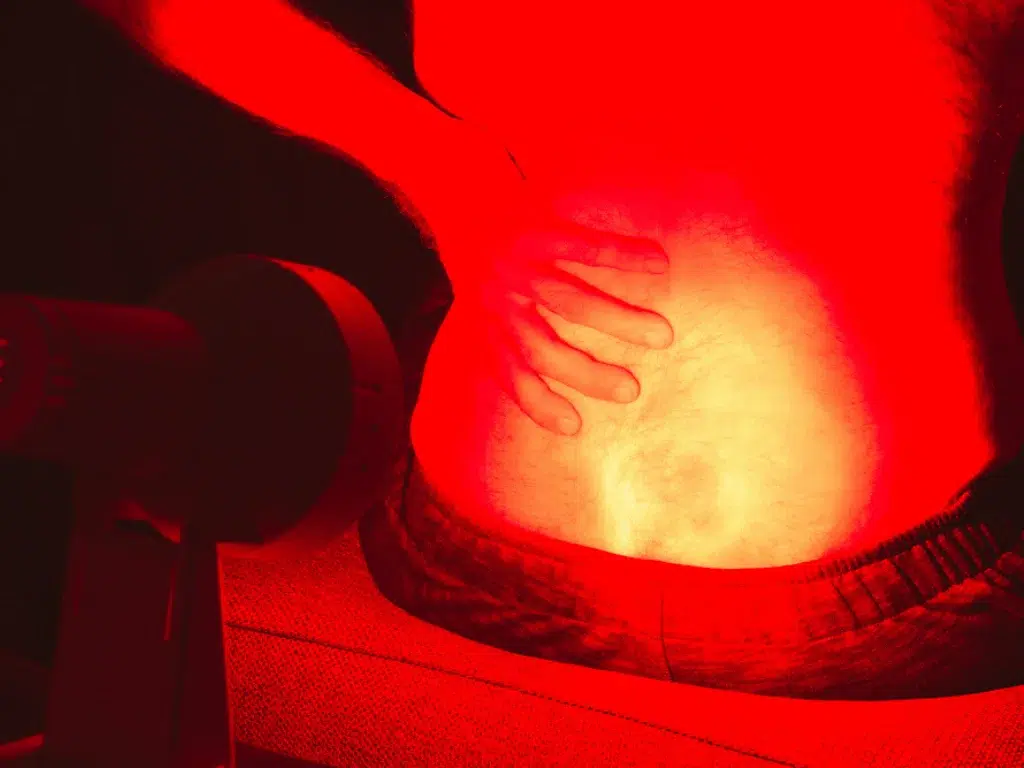
What are the potential risks and side effects of red light therapy?
Most people generally consider RLT safe and well-tolerated. Side effects that you should be aware of before using RLT devices, such as:
- Eye damage: RLT may cause eye strain, irritation, dryness, or damage if you look directly at the light or use it near your eyes without proper protection. Always wear protective goggles or sunglasses when using RLT devices, especially near your eyes or face.
- Skin irritation: RLT may cause skin redness, itching, burning, or rash if you have sensitive skin or use it for too long or too often. You should always test a small area of your skin before using RLT devices, especially on your face or other delicate areas. You should also follow the manufacturer’s instructions and avoid overexposure or overuse of RLT devices.
- Heat damage: RLT may cause heat damage to your skin or tissues if you use it too close to your skin or for too long. You should always keep a safe distance between your skin and the device and limit your session duration and frequency. You should also avoid using RLT devices on open wounds, infections, or inflamed areas.
- Interactions with medications or conditions: RLT may interact with certain medicines or situations that make you more sensitive to light, such as photosensitizing drugs, chemotherapy, radiation therapy, lupus, porphyria, or epilepsy. You should always consult your healthcare provider before using RLT devices if you have any medical conditions or take any medications that may affect your response to light.
Learn the benefits of sauna use for the skin, such as reducing cellulite and signs of aging.
Final Words:
Red light therapy is a treatment that uses low-level wavelengths of red and near-infrared light to enhance your skin and health. It may help with various issues and conditions, such as aging signs, wound healing, pain and inflammation, hair growth, athletic performance, brain health, and immune system function.
If you want to try red light therapy for yourself, research and find a device that suits your needs and budget. You should also monitor your progress and results to see if they work.
This blog post has given you helpful information and insights on red light therapy. If you have any questions or comments, please leave them below.
Thank you for reading!
Visit For more reading about hot tubs patio and more information about Saunas.
Common Queries:
Is red light for therapy safe for children? It is generally safe for children, but following safety precautions and starting with shorter sessions is essential.
Can red light therapy help with acne? Yes, it can help reduce inflammation and improve skin health, benefiting acne.
Can red light for therapy be used with other treatments? It can be integrated with other treatments, but speaking with a healthcare professional is essential.
How much does a red light therapy device cost? The cost of a red light device can vary depending on the type and brand. Handheld devices can range from $30 to $200, while lightweight panels and full-body beds can range from $200 to $1,000.
Can you use red light therapy in a sauna?
Combining red light therapy with a sauna can be beneficial. Red light therapy uses low wavelengths of red light to promote healing, reduce inflammation, and improve skin health. When used in a sauna, the heat enhances these benefits by increasing circulation and relaxing muscles. It’s important to use the therapy as directed to avoid overexposure, which can cause skin irritation.
Where Not to Use Red Light Therapy
Avoid using red light therapy on:
- Eyes: Direct exposure can harm your vision.
- Open Wounds: It might delay the healing process or cause irritation.
- Sensitive Skin Areas: Places prone to burns or rashes should be cautiously treated.
- During Pregnancy: Consult a healthcare provider before use.
What to Do After Red Light Sauna
After a session in a red light sauna:
- Hydrate: Drink plenty of water to replenish lost fluids.
- Rest: Allow your body to cool down and relax.
- Moisturize: Apply lotion to prevent dry skin.
- Avoid Immediate Exercise: Give your muscles time to recover from the heat and therapy.
How Often to Use Red Light in a Sauna
The frequency depends on your health goals and the device’s intensity. Generally, 3-5 times a week is recommended for noticeable benefits. Always start with shorter sessions and gradually increase as your body adapts. Consult a healthcare provider for personalized advice, especially if you have underlying health conditions.








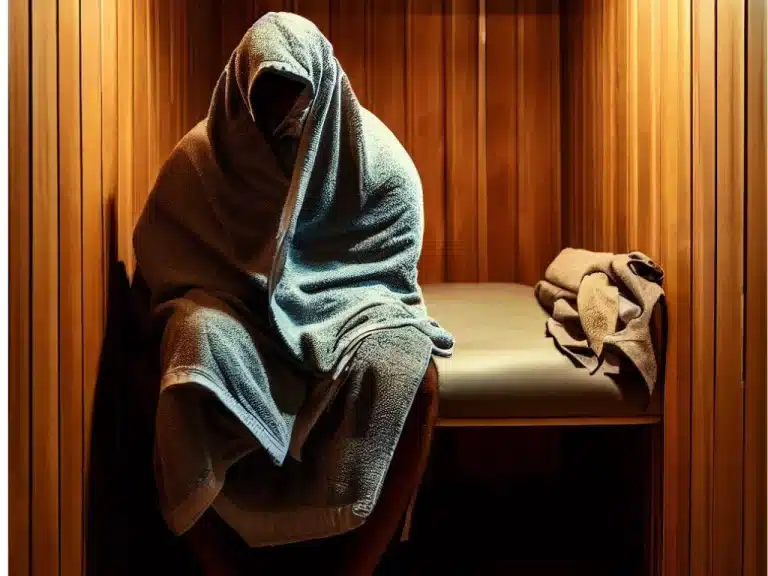


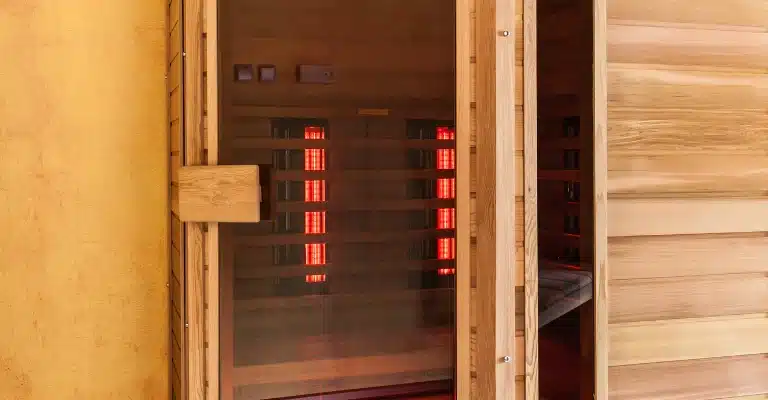
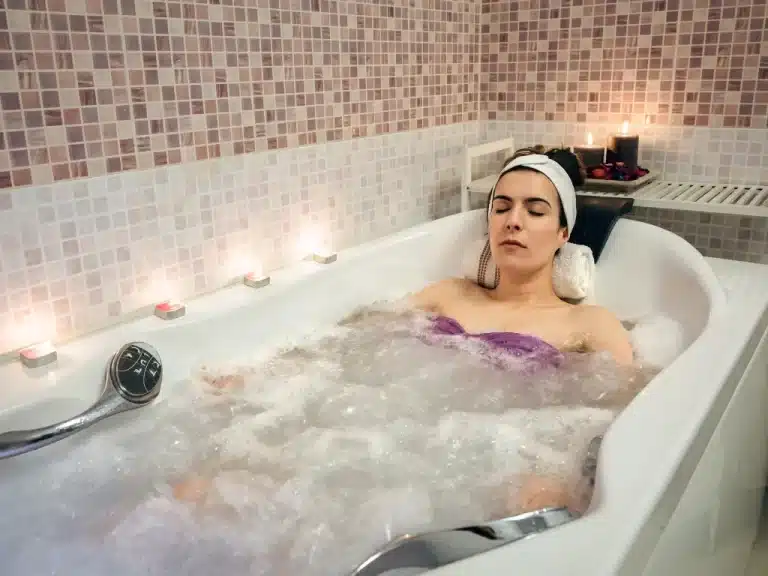

Nice post. This wasn’t what I was searching for but I still liked reading it.